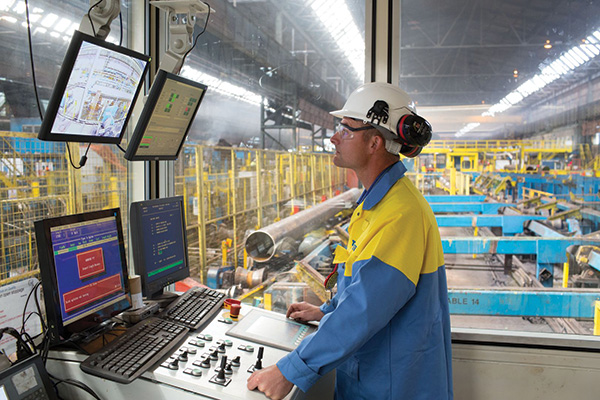January 2020, Vol. 247, No. 1
Features
Considering Advantages of HFI Welded Pipelines
By Barry Rust, Energy and Sustainability, Tata Steel
According to The U.S. Energy Information Administration (EIA), the country’s oil production reached a record 12.2 MMbpd in April 2019.
Last year, annual crude production from the United States reached a record 11 MMbpd, representing the largest increase by any country ever, with annual production forecast to rise by 1.4 MMbpd this year and 900,000 bdp in 2020.
The continuing increases in demand for oil and gas in the U.S. and elsewhere has led to the country exporting its supply of home-produced hydrocarbons once again.
However, it has also placed pressure on existing U.S. domestic pipeline infrastructure and led to shortages, particularly in the expanding shale plays, which have revolutionised production growth in recent years. At the same time, government has imposed tariffs on selected steel imports.
As the world transitions toward a lower carbon economy with a greater focus on environmental issues among a range of considerations for infrastructure and pipeline developments, the requirement for higher-grade steels capable of performing in challenging or niche locations becomes more acute.
To be clear, the domestic industry has the capabilities to produce steel to the very highest standards of strength and integrity and has demonstrated this on many occasions over the years. However, whether it has enough capacity to meet all its current and future quality steel needs to produce high integrity pipelines is debatable.
Onshore, Offshore Pipelines
Onshore pipelines are often longer than those offshore. Because of the distances that can be involved these are frequently operated at higher pressures. To counterbalance the impact of high pressure, such pipelines require either a greater wall thickness or use of a higher strength steel.
For both offshore and onshore pipelines, maintaining integrity is a key consideration – whether to reduce the exposure to risk for nearby residents or issues such as avoiding costly subsea intervention. Operators rightly need to be confident their chosen manufacturer can deliver pipe with high strength, tolerance and integrity to meet such challenges.
Total project cost is another critical consideration when manufacturing steel with a high yield strength, high integrity and good weldablity.
The addition of expensive alloys during the manufacturing process can help to create a high-strength steel, however this can add to material cost. An alternative is to create steel with a higher carbon content at a lower cost, but this can present welding challenges and impact on productivity.
Manufacturing a steel that can provide the correct balance between high strength and helping to optimize total project cost can take research and development (R&D) departments several years to perfect. Tata Steel has invested significantly on R&D to create materials that meet the modern industry’s challenges.
Final Product
Another area in which total project costs can be optimized is in the choice of the final product, and offshore Gulf of Mexico provides a good example of how the oil and gas industry is taking advantage of the latest developments in pipeline manufacture to generate significant financial benefits.
High-frequency induction (HFI) welded line pipes have traditionally generated limited interest in the Gulf compared to more expensive seamless alternatives, despite the increased adoption of HFI welded pipelines elsewhere in the world.
However, advancements in welded solutions over the years, and their proven successful performance in complex and challenging offshore environments such as the North Sea, have stimulated increased demand for HFI welded pipelines in the U.S. recently.
This demand has intensified since the industry’s emergence from the latest oil price downturn and the development of a more cost-conscious environment focused on operational expenditure (opex) reduction and increased process efficiency.
The benefits of HFI welded pipelines include total lifetime cost savings driven by tight tolerances, material savings, exceptional surface conditions that require less preparation and provide an excellent coating base and the potential for very short lead times.






Comments